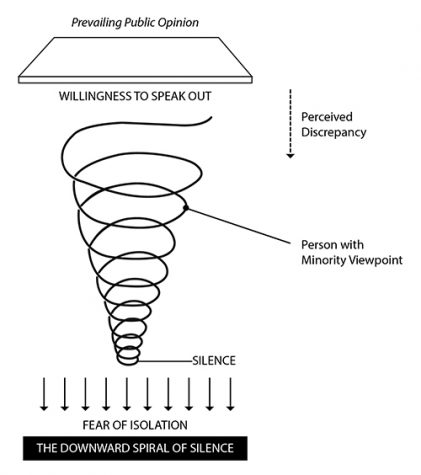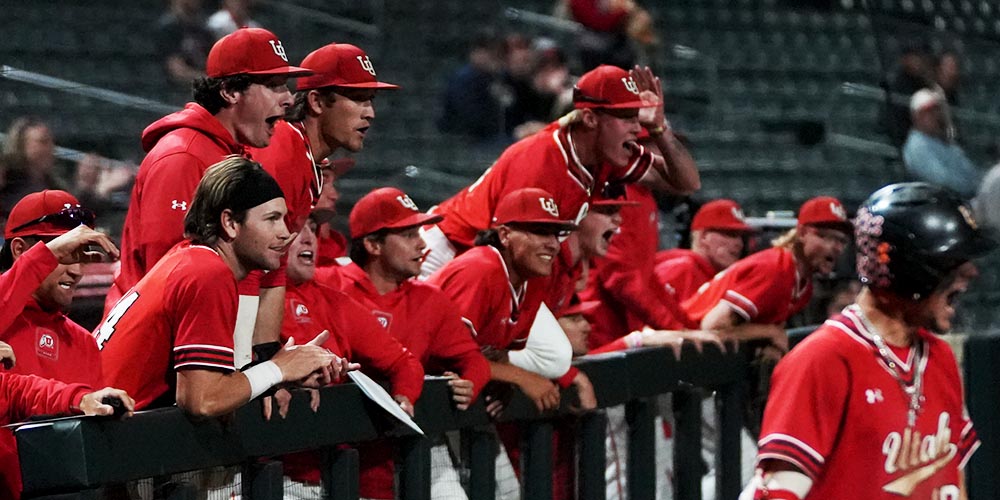Silence: The Deadliest Part of Politics
December 12, 2018
Currently, the US is so fiercely politically divided that one of the only things the two parties can come to an agreement on is just how divided they seem to be.
Since the 2016 presidential election, politics has been one of the hottest topics, and not just out of popularity, but more so out of the controversy that’s arisen because of it. Much of the buzz circling around politics is created by those in opposition of Trump, carried out in droves through advertisements, celebrity sponsorships, and even certain stars refusing to take on the limelight in protest. Why is it that so many people feel so negatively about Donald Trump? And if things are as bad as they claim to be, how did it get this way?
One of Trump’s most notable qualities is his ability to speak on controversial topics such as immigration, individual rights, foreign policies and other topics with such complacency, although some have lended it to ignorance. Predictably, this trademark of his usually gets him into more trouble than not.
At the beginning of his presidency, many American citizens, and even those of foreign governments, were outraged by some of the actions taken by the President, and the media quickly became a frenzy of opinion pieces. Slowly, though, less and less people continued to talk about the problems that resulted from the actions taken by the commander in chief. Why did this happen? With the election being one of the most controversial and splitting events in recent history, why does it seem like the number of people speaking up about it has dwindled, while his opposition steadily rises? First having a 45% approval rate throughout the country, and now, after a 10 point decrease, only 35% of the initial 45% still stand by their view of the President. This is one of the lowest approval ratings in American history for Presidents thus far into their term.
To understand more on the topic, I thrust myself deep into the topic of Political Sciences, which Google defines as, “the analysis of political activity and/or behavior.” Specifically, a theory called the “Overton Window.” Simply put, the Overton Window is a metaphor for what society, at the time, deems to be acceptable or non-threatening. As society changes and grows, the window can move more left or right, depending on the ideals and values of the current societal climate. Here’s an example:
Both left and right parties have their own versions of radical behaviors/legislation, and the window shifts, most times unbeknownst to us, as one of the two becomes more appropriate.
To give a simplified example, let’s project it into the topic of parents vs. violent video games. For the children playing these games, they may become more desensitized or normalized to witnessing and taking part in violence. This could cause their empathy or reasoning when it comes to violent situations to fall dramatically. To some parents, the thought of their child playing these games is frightening, a sort of “last case scenario.” So, you have children, the left, and parents, the right. As a member of society looking in on the situation, one can form their own opinions on the subject. Averagely, where most of the opinions are in similarity with one another, that is where the Overton Window on the topic would lie.
Something causing a lot of commotion in the modern day political atmosphere is that the Overton Window is slowly and steadily moving farther and farther to the right. Not only the general Republican or Conservative ideas, which are not a problem, and have always existed in politics, but specifically the more extreme alt-right ideals, that are quickly gaining more speed and more supporters. In an article written by the Atlantic, they were quoted saying, “The alt-right members were much more likely to consider groups they see as their opponents—people like Muslims, Mexicans, blacks, journalists, Democrats, and feminists—to be less evolved than they are.” (The full article can be found if you click here.) Steadily, through remarks made by government officials, the President included, these ideals and beliefs spread.
If such unjust things are being done out of the corners of society’s eye, and people are taking notice, why isn’t there more of a stir on the subject? Why isn’t there more of a discussion?
This phenomenon is known as Neumann’s Spiral of Silence, which works through a combination of environmental and societal factors. Simply explained, when there is a public opinion/topic, someone’s willingness to speak out on the topic varies dependent upon media and the opinions expressed by those around them. Let’s put this into a scenario.
You’re going to be attending a protest, but it’s your first time, and you live in an area where new ideas and movements aren’t really that widely embraced. You think you can tell your friends, but then you hear them criticizing the cause, so instead you decide to say nothing. This is the spiral of silence. Opinions opposite our own and the portrayal of things in the media plummet us farther down into silence, a place where we are too unsure or afraid to share our voice.
How do these Political Sciences fit into Trump’s presidency?
Even just recently, Trump’s “official releases” on the social media platform Twitter have been, well, much less than professional.
The President released this tweet in reference to Adam Schiff, a representative for California’s 28th Congressional District, as well as a ranking member of the House Intelligence Committee. When reflecting on the topics of the Overton Window and Neumann’s Spiral of Silence, how does it affect the society we’re in today? And what does that mean for us?
In modern politics, each year voters seem to remain somewhat silent, and it has pushed several companies to advertise voter registration. Some even going as far as to push for the voting process to be simplified, as to make it more convenient for those constantly on the go. Some of the companies pushing its customers/users to vote include:
- Levi’s Jeans (https://www.levi.com/US/en_US/)
- Twitter (https://twitter.com/)
- Walmart (https://www.walmart.com/)
- Patagonia (https://www.patagonia.com/home/)
- Lyft (https://www.lyft.com/)
- Snapchat (https://www.snapchat.com/)
Since the 2016 election, silence develops into something more and more unacceptable. Many celebrities and corporations are reaching out to their audience and urging them to use their right to vote. For example, on October 7th, pop icon Taylor Swift went to Instagram to express her experience voting, at one point saying, “I cannot vote for someone who will not be willing to fight for dignity for ALL Americans, no matter their skin color, gender or who they love.” (The rest of this post can be viewed here.) The Guardian reported that, “Kamari Guthrie, the director of communications for vote.org…[said] there were 65,000 registrations in the 24-hour period after the singer posted her statement to Instagram on Sunday.”
Upon seeing Swift’s message, in a way, the Spiral of Silence was reversed for some of her audience, and the following result was tens of thousands of new voter registrations. By dissecting the political climate of today using political science tactics, one can analyze the deeply rooted division that lies between the two political parties, and the problems that come from it. Through small actions of expressing views and opinions, the Overton Window can be shifted dramatically, and the Spiral of Silence can be reversed. One thing that will remain absolute, political parties excluded, is that using your voice to discuss what you believe in will always be your biggest weapon in the fight for political triumph.











